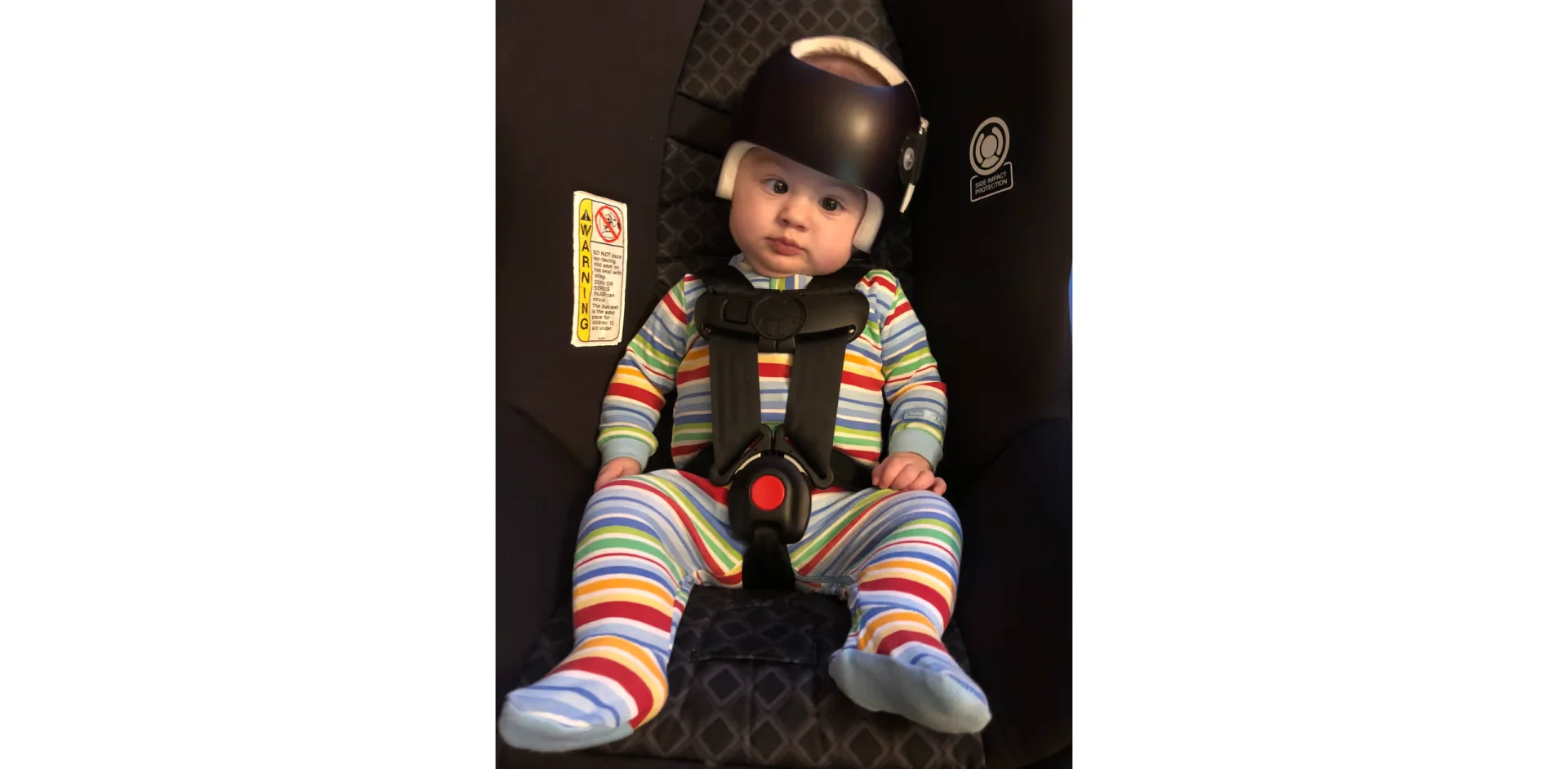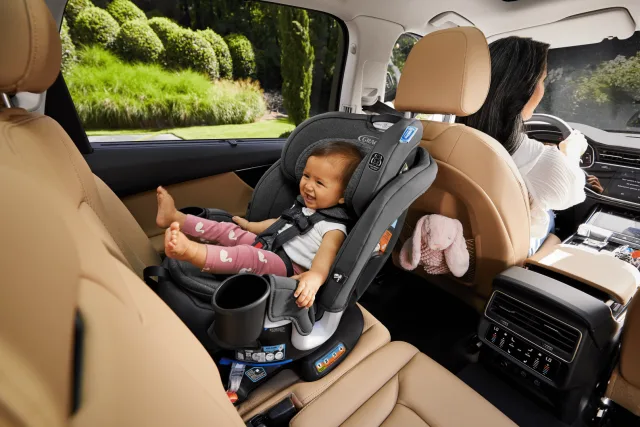Babies come in all shapes and sizes. For the most part, these differences are just what make children beautifully unique. However, sometimes babies are born with flattened or misshapen heads, which can cause concern in both parents and medical professionals. Luckily, when caught early by vigilant caregivers, a misshapen head is an easy fix with some basic intervention.
One common way this issue is addressed is via an infant medical helmet. Parents have lots of questions when starting helmet therapy, and some of those questions are often about car seat safety! So, today, we’re discussing whether or not infant medical helmets impact the way you safely use a car seat.
What You Need to Know About Infant Medical Helmets and Car Seats
In this post, we’ll explain exactly what infant helmets are for, why infants wear them, and how you can determine if your baby might need medical intervention. And, since we at Safe in the Seat are all about car seat safety, we’ll make sure you have the information you need to safely use your infant medical helmet in a car seat.
What Are Infant Helmets For?
Infant helmets are special medical tools prescribed to correct the head shape of a baby over time. They’re also called cranial molding helmets, cranial orthoses, or infant medical helmets! They’re given to babies between 4 and 6 months of age that have conditions like plagiocephaly (flat head syndrome), positional plagiocephaly (deformational plagiocephaly), brachycephaly (short and wide head shape), craniosynostosis (congenital plagiocephaly), or scaphocephaly (long and narrow head shape).
These special helmets are used when babies are young so their skulls are still malleable, allowing the head to grow and correct itself in just a few months. As baby grows, the helmets slowly reshape the skull by providing growth space for certain parts of the skull while applying gentle restrictive pressure for other parts of the skull.
Why is this important? It’s actually not just cosmetic. A misshapen head can actually negatively impact brain growth and other developmental milestones. So, fixing head shape problems is essential to prevent complications down the road!
Why Do Infants Wear Helmets?
There are lots of reasons an infant may develop a condition that requires the use of helmet therapy. Here are some of the main reasons:
- Positional Plagiocephaly or Prolonged Supine Position: These conditions occur when consistent pressure is applied to one part of the head, often from baby spending too much time on their back or sleeping in the same position night after night.
- Premature Birth: When a baby is premature, they’re skulls are softer, allowing for more opportunities for head flattening this is especially true if they’re in the NICO for extended periods.
- Multiple Births: Twins or triplets may have restricted space in the womb, causing pressure on their heads.
- Limited Mobility: There are some medical conditions like torticollis (tight neck muscles) that limit a baby's ability to turn their head, leading to flattening.
- Craniosynostosis: This is a condition where the fibrous joints between the bones of a baby's skull close prematurely, leading to abnormal head shape and potential developmental issues.
- Developmental Delays: Delays in motor development can lead to a baby spending more time on their back, which of course can cause head flattening.

Do Infant Helmets Impact Car Seat Use?
Infants in helmet therapy must wear the helmet for 23 hours a day. That means that helmet is going everywhere with a family including car rides! Luckily, you don’t need a special needs car seat just because your baby wears an infant helmet.
We do recommend, however, that you choose a car seat that has rethread harness straps, because it's flat in the back, allowing for flatter, safer head and body positioning when your baby is buckled into their seat. Other than that, there are no special car seat strategies to apply when an infant is in helmet therapy!
And, if you're curious about the newborn padding, here's more information on car seat infant head supports.
How To Know If Baby Needs Helmet Therapy
Worried your child may need helmet therapy? It’s best to contact your baby’s pediatrician, but here are some indications a doctor may prescribe helmet therapy:
Your child has noticeable flat areas on their head.
If you notice your child’s head has a noticeable flat spot anywhere on their head, they may need an infant medical helmet. This flat spot will normally be in an area where your child spends a lot of their time, like their favorite sleeping position.
Your child’s forehead, ears, or jawline are uneven.
Head growth problems may look more obvious on other areas of the face. If you see any unevenness of the forehead, ears, or jawline, consider contacting your baby’s pediatrician.
Your child is missing milestones like rolling over or crawling.
Any time your baby is missing milestones, it’s a good idea to talk to their pediatrician. It could be a sign of a bigger issue, and a misshapen head may be the reason for these delays or it could be part of the broader diagnosis.
No other remedies have helped head shape issues.
When you identify an issue with your infant’s head shape, baby helmet therapy may not be the first thing your pediatrician recommends. They may suggest more tummy time, physical therapy, and repositioning techniques. If you’ve tried those and haven’t found success, helmet therapy may be the next step.
Your child can safely wear their infant medical helmets in the car seat!
Infant helmet therapy can feel a little overwhelming at first, but don’t worry about how things will work when riding in the car. Your child can use their car seat as usual with a medical helmet! However, if you’re struggling to get that good fit, don’t forget a car seat with rethread straps will provide a better and safer position for your little one. If you need help finding one, check out our car seat finder tool!
And, don’t forget you can book one of our car seat techs for a personal consultation to discuss any of your questions about car seat safety. At Safe in the Seat, we’re here to answer all your car seat questions, from the simplest of fixes to the most complicated scenarios. We’ll help take one stressor off your plate and give you peace of mind with every ride.






